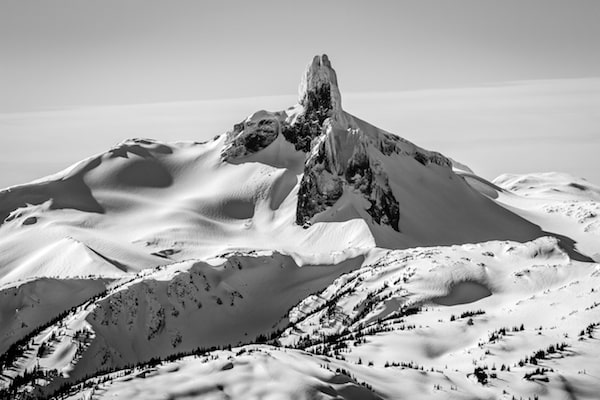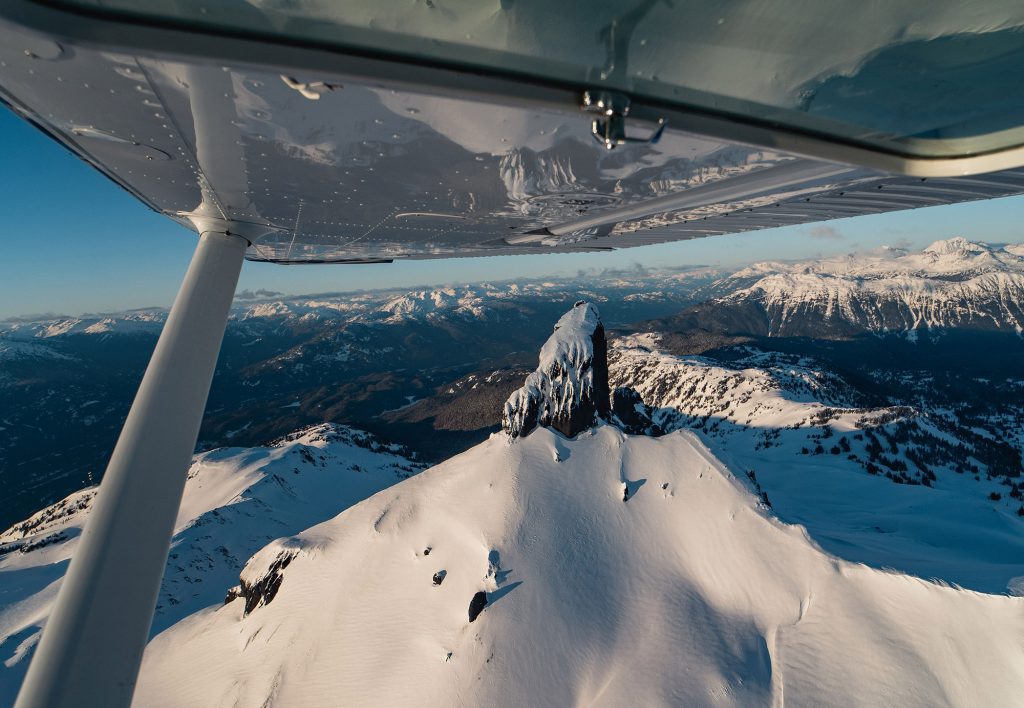People looking for a day trip from Vancouver almost have too many options for sightseeing and adventures in Squamish. You could spend weeks exploring valleys, peaks, and meadows on foot and still only scratch the surface of what this amazing region has to offer.
Regardless of how long you spend here, make sure you take some time to see the Black Tusk. One of Squamish’s most magnificent natural wonders, the Black Tusk is a dormant stratovolcano that forms part of the Pacific Ring of Fire. Some consider it to be the jewel of Garibaldi Provincial Park and one of the most beloved Squamish attractions.
Related post: Is there a volcano in Vancouver? The answer might surprise you
Black Tusk Mountain sits in Garibaldi Provincial Park within the northernmost reaches of the Canadian Volcanic Arc. At 2,319 m above sea level, the upper spire is visible from a great distance in all directions. It is thought that the Black Tusk’s iconic shape is a result of the volcano’s cinder cone gradually eroding over time, leaving the black magma plug that we see today standing proud and tall over the park.
The Black Tusk is the remnant of a much larger volcano that formed during two periods of volcanic activity between 1.3 and 1.1 million years ago. Within the Candian Volcanic Arc, and just a day trip from Vancouver, are two of the regions most influential volcanic zones: the Garibaldi Volcanic Belt and the Pemberton Volcanic Range. While there are no historical records of eruptions on the Canadian side of the Cascade Mountains, the Pemberton and Garibaldi Volcanic Belts are thought to be dormant and the possibility of activity is likely in the future.
The hiking trail to the Black Tusk is full of alpine meadows, flowers, volcanic rock formations, lakes, and mountain vistas. The hike itself is a 21km round-trip that can take between 8-10 hours depending on fitness and how often you stop for rest or photography breaks.
Described by Whistler Hiatus as a “moderately strenuous long hike with a very difficult final ascent” the Black Tusk is a popular day trip from Vancouver with the drive taking around 2-hours from downtown.


To the people of the Squamish Nation, the Black Tusk is the “Landing Place of the Thunderbird”. The jagged shape of the mountain and its black colouring are said to have come from the Thunderbird’s lightning.
The Squamish Lil’wat Cultural Centre tells the story of the Spo7ez and the legend of the Thunderbird:
“Spo7ez was a village shared by the Squamish and Lil’wat Nation at the confluence of Rubble Creek and the Cheakamus River at Function Junction in Whistler. For many years the members of both nations lived peacefully engaging in trade and commerce. Over time the villagers began to disrespect one another and the Thunderbird decided to take action. He flapped his wings causing a volcano to erupt and a massive rockslide that buried the ancient village of Spo7ez under a hundred meters of rock debris. Hundreds were killed instantly as the massive rockslide swept down the mountainside to the ocean.
The survivors were sent home with a message, that we’re friends, family and neighbours and we need to work together. This story is still told today, and is evidence of our longstanding relationship with each other and a reminder of the importance of cooperation and a peaceful coexistence. Black Tusk is estimated to have erupted in the late Pleistocene Period, 20 thousand years before present to early Holocene Period 1807 thousand years before present. Whistler After the Thunderbird caused the volcano to erupt at Black Tusk both communities were told they could only have seasonal camps in the Whistler area. They were told that as you came into the valley and could see Black Tusk that would be the beginning of the shared territory.” – slcc.ca/history
Within a small radius are such outstanding natural attractions as the Black Tusk, Panorama Ridge, Helm Glacier, the Sphinx, Guard Mountain, Garibaldi Lake, the Table, Sentinel Glacier, Sphinx Glacier and Castle Towers. Here are some wonderful aerial photos of Black Tusk and the surrounding landscape.
Resources for this post:
1. British Columbia’s Magnificent Parks: the first 100 years; James D. Anderson. 2011
2. www.env.gov.bc.ca
3. www.slcc.ca
4. British Columbia: a natural history of its origins, ecology, and diversity with a new look at climate change; Richard Cannings & Sydney Cannings. 2015.